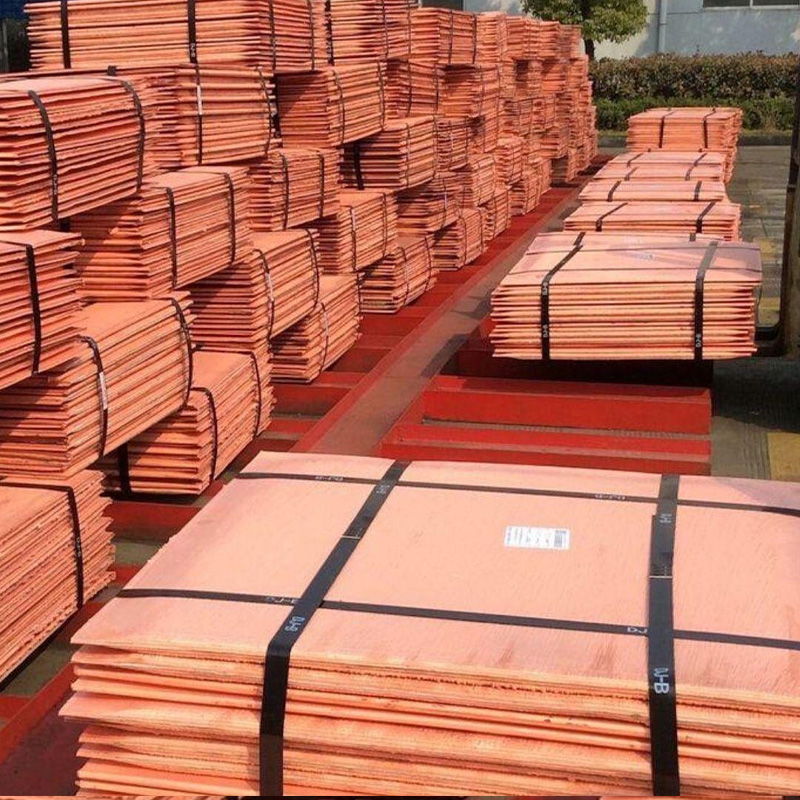Copper cathode 99.99% Grade A – Need LME-Approved Supply?
Copper cathode demand has been on a tear—EV wiring looms, grid-scale transformers, even heat pump rollouts are quietly sucking up more copper than many forecast a couple of years ago. Prices zig and zag, sure, but the production story is steady: Grade “A” sheets, tightly controlled impurities, predictable logistics. From Room 1410, No. 119 Zhongxing East Street, Xiangdu District, Xingtai City, Hebei, China, this supplier keeps popping up in buyer shortlists—and to be honest, I see why.
Here’s the headline: Copper cathode made to LME standard dimensions (914 × 914 × 12 mm), Cu purity 99.97–99.99%. That’s the spec you want for rod mills, busbar makers, and precision tube drawing. In fact, many customers say the lot-to-lot consistency matters more than the last decimal place of purity—process stability saves more money than it costs.

Product specifications (quick view)
| Grade | “A” (ASTM B115 / EN 1978-compliant, LME-conformable) |
| Cu purity | 99.97% – 99.99% (typical ICP-OES assay ≈ 99.985%; real-world lots may vary) |
| Dimensions | 914 mm × 914 mm × 12 mm (LME standard) |
| Weight per sheet | 125 kg ±2% |
| Net per pallet | ≈ 2.0 MT ±2% |
| Net per container111 | ≈ 20.0 MT ±2% |
| Packing | Palletized, strapped, PE-wrap, corner protectors (export-ready) |
| Certs | ISO 9001, RoHS statement; LME-conformable brands upon request |
Process flow and quality control
Materials & methods: sulfide ores → flotation concentrate → smelting to blister (≈98–99% Cu) → fire refining → electrolytic refining. Stainless starter sheets or permanent cathode plates carry the deposition. Stripping and bundling are automated (less warping, cleaner edges). Testing? ICP-OES/GDMS for impurities; conductivity checked vs IACS (≈100% target); visual flatness and lamination tests per ASTM B115 routines.
Typical impurity window (indicative): Ag 10–25 ppm, Pb ≤5 ppm, Fe ≤10 ppm, As+Sb+Bi each ≤0.5 ppm—kept tight to protect downstream casting tips. Service life is effectively indefinite if stored dry; corrosion mainly cosmetic before melting.

Where it’s used (and why it matters)
- Continuous cast & roll rod (CCR) for magnet wire, EV harnesses, and building cable.
- Busbars and transformer windings (conductivity near IACS 100% is the point).
- Precision tubes, heat exchangers, and refrigeration components.
- Electronics copper foil feedstock, including battery foils (upstream stage).
The advantage of Copper cathode versus scrap blends is predictable melt chemistry—fewer inclusions, smoother casting, fewer line stops. Sounds mundane, but downtime is where margins go to die.
Vendor comparison (at a glance)
| Vendor | Purity (Cu) | Sheet size | Certs | Lead time | Customization |
| Xingtai Shuoding (Hebei) | 99.97–99.99% | 914×914×12 mm | ISO 9001; LME-conformable | ≈ 10–21 days | Packing, assay, pallet plan |
| LME-listed brand (global) | ≥99.99% | 914×914×12 mm | LME, ISO | 2–6 weeks | Limited |
| Regional non-LME mill | 99.90–99.97% | Varies | ISO (varies) | 1–4 weeks | Negotiable |
Customization, testing, feedback
Customization usually means tighter impurity caps, pallet maps optimized for your furnace charge, COAs aligned to ASTM B115, and third-party assays on request. One buyer told me their reject rate on CCR tips dropped “noticeably” after switching Copper cathode brands; not exactly peer-reviewed, but consistent with cleaner melts.
Mini case study
A mid-size cable mill in Southeast Asia shifted 40% of rod feedstock to these Copper cathode lots. Over three months, they reported ≈0.7% higher rod yield and one fewer unplanned caster stop per month. Cause? Likely lower Pb/Fe spikes and steadier oxygen pickup. Small wins, big picture.
Ordering notes
FOB/CIF both workable; standard container111 loads ≈20 MT ±2%. Keep storage dry, avoid chloride-rich atmospheres. Real-world handling is simple: forkliftable pallets, straps hold up well; I’ve seen worse.
Citations
- ASTM B115 – Standard Specification for Electrolytic Copper-Cathode.
- EN 1978 – Copper and copper alloys: Cu-CATH-1 cathodes.
- LME Copper – Brand listing and delivery rules (London Metal Exchange).
- IACS conductivity reference – 100% IACS ≈ 58 MS/m (IEC conventions).
Share
-
Lithium Battery Welding Machine | High-Precision, Fast, SafeNewsNov.17,2025
-
Aluminium Guide Roller | Anodized, Lightweight, Low-NoiseNewsNov.17,2025
-
Tofu Cat Litter Bulk – Eco, Low-Dust, Fast Clumping SupplyNewsNov.17,2025
-
Equipment for Lithium Cell Assembly | Automated & PreciseNewsNov.10,2025
-
Square File Tool – Precision Cut, Hardened Steel, VersatileNewsNov.10,2025
-
Lithium Ion Battery Assembly Machine | Automated, High-SpeedNewsNov.10,2025







